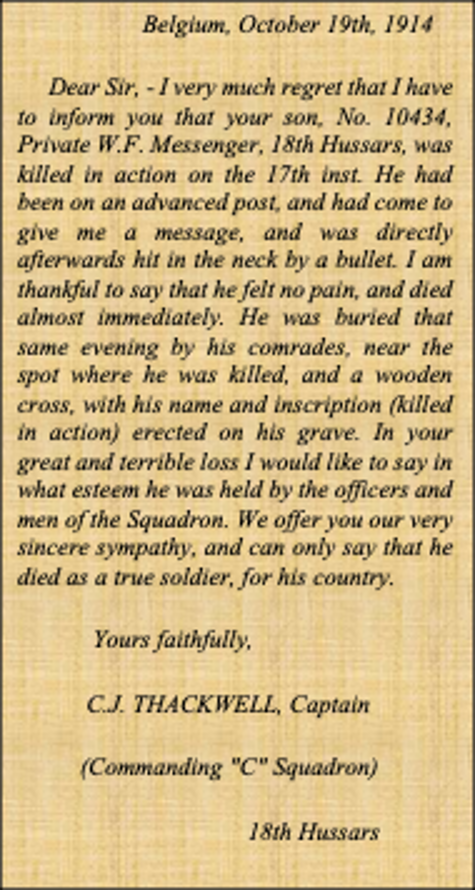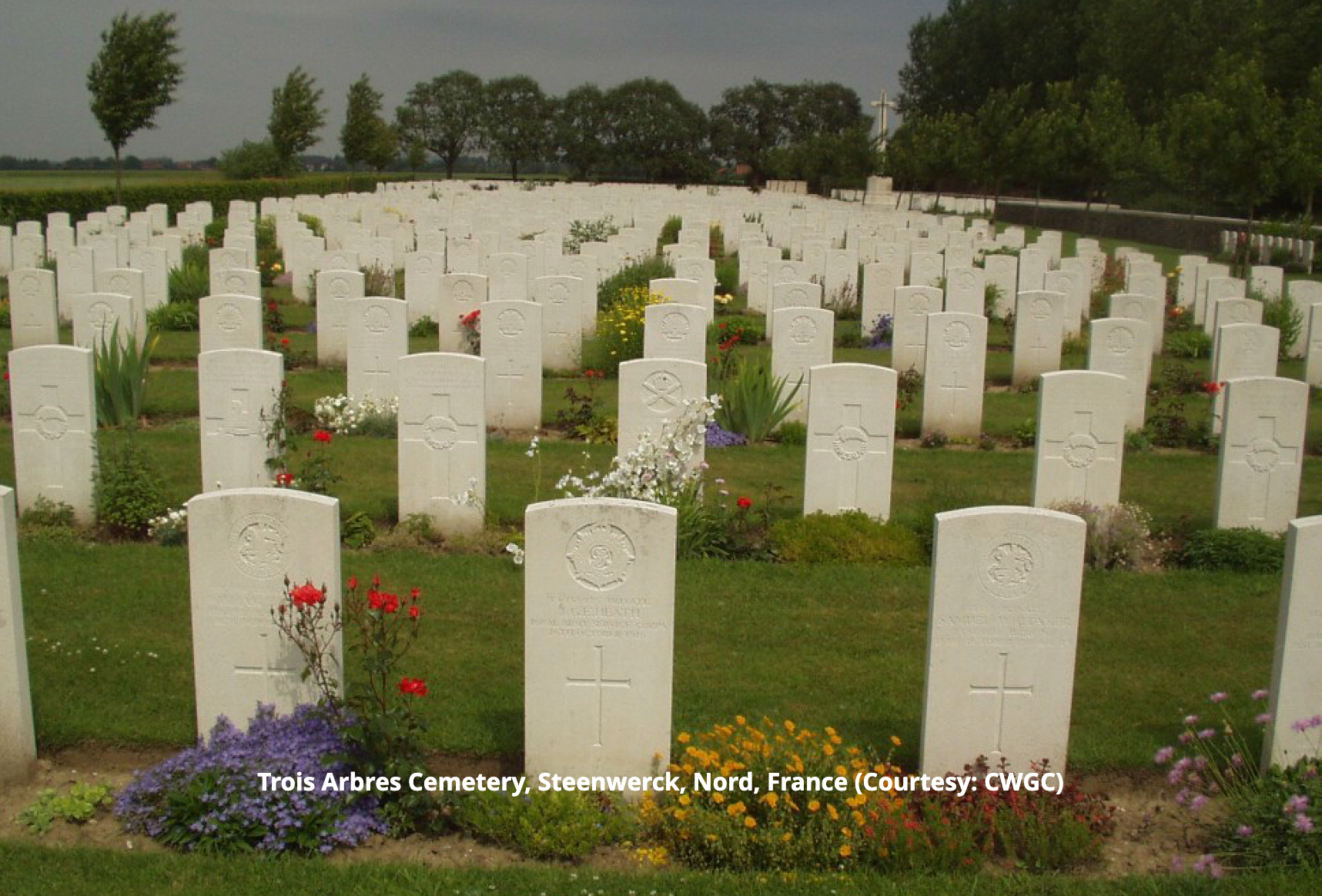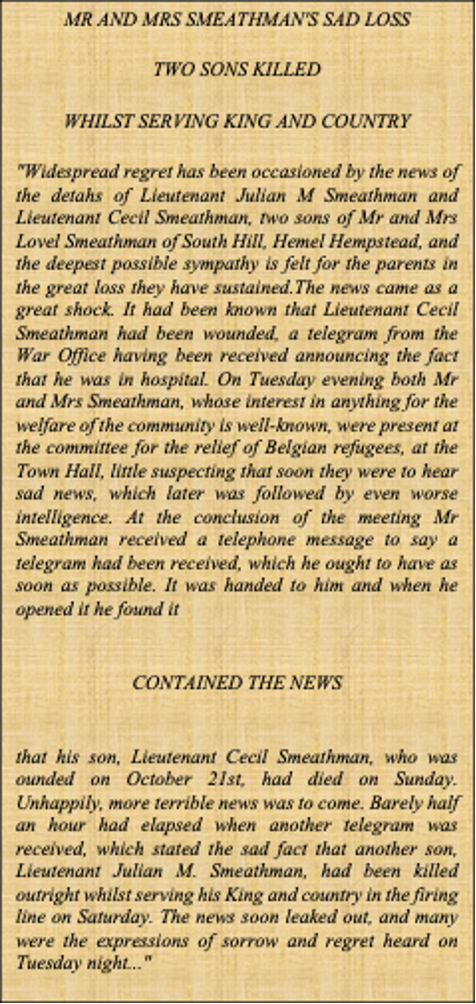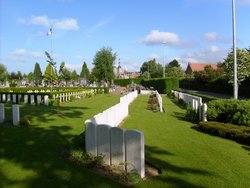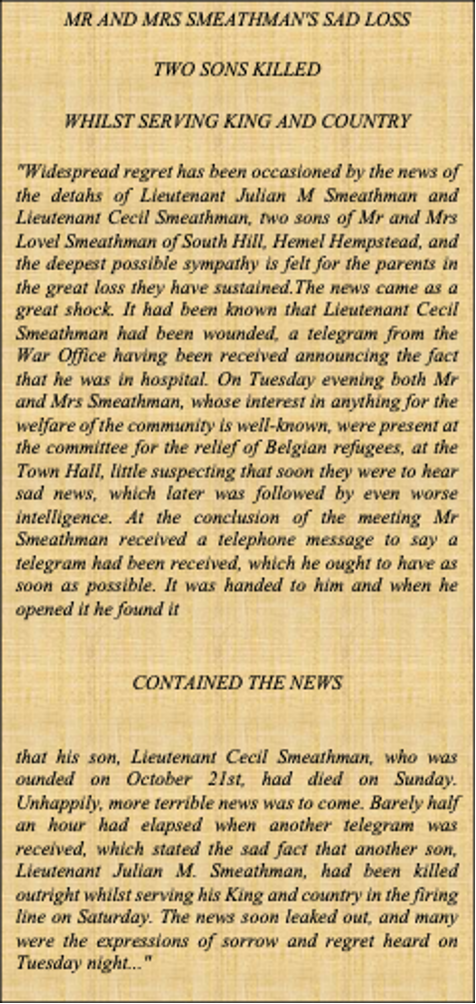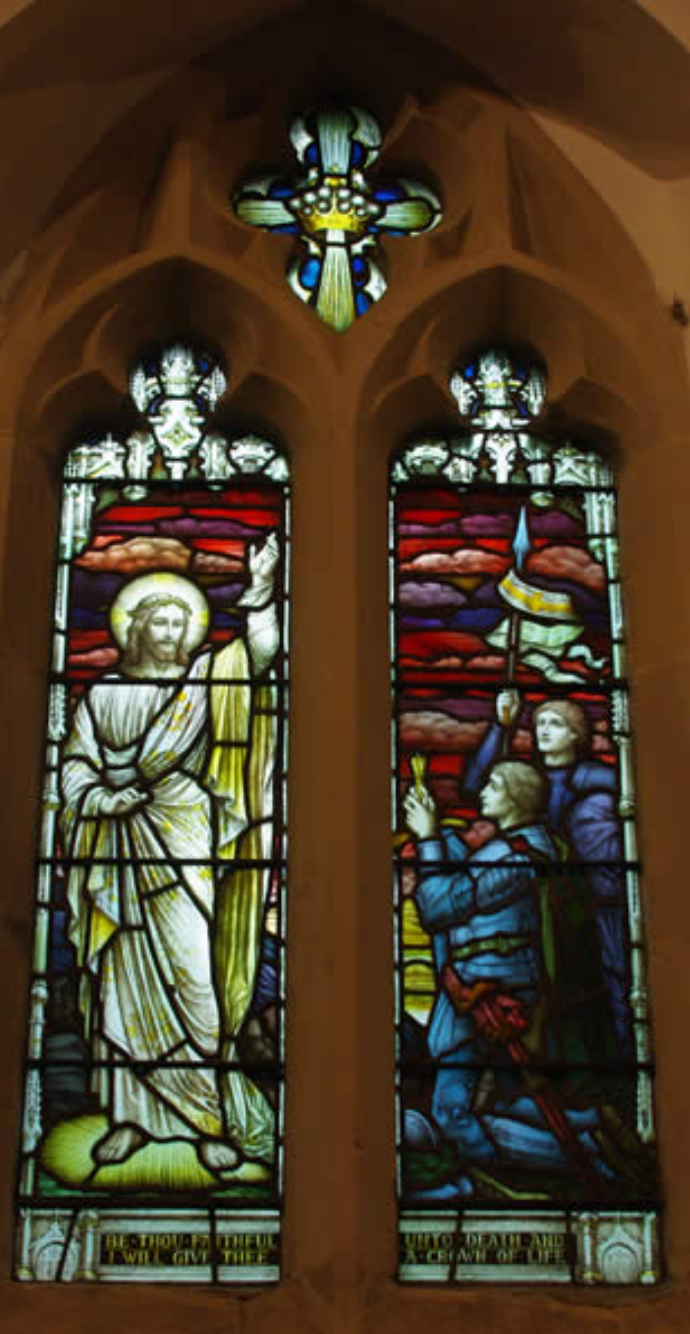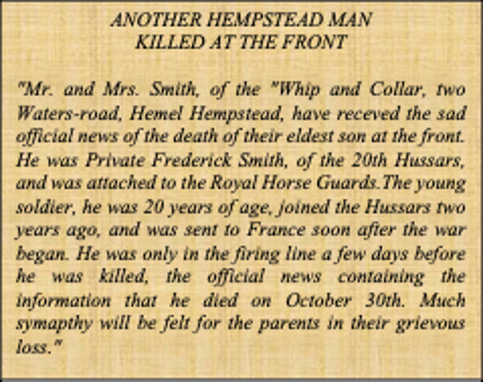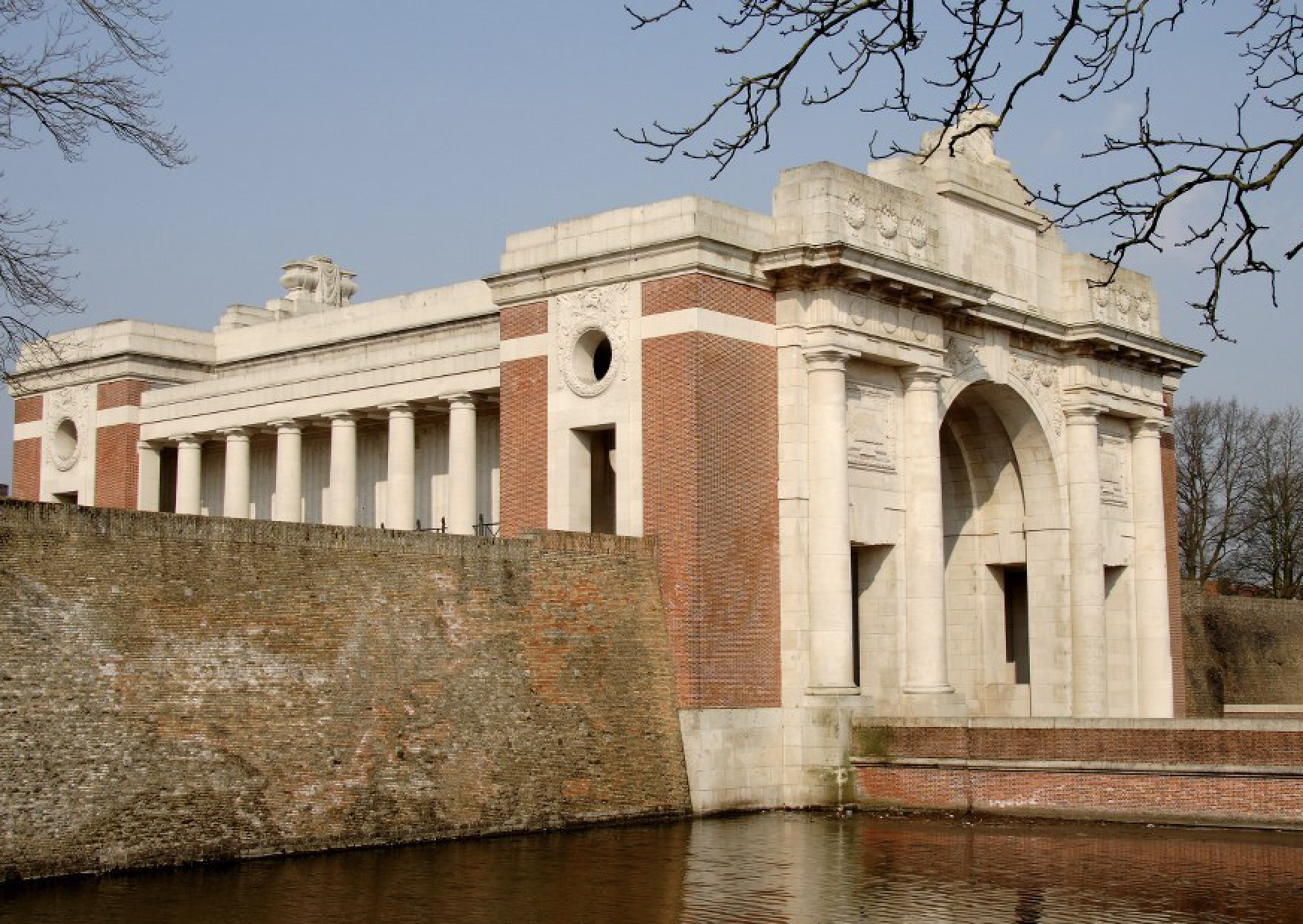Fallen in October 1914:
Walter Ernest Frank Messenger
Cecil Smeathman
Julian Missenden Smeathman
Frederick Sidney Smith
WALTER ERNEST FRANK MESSENGER
10435 Private
18th (Queen Mary's Own) Hussars
K.I.A. Saturday, 17th October 1914
Remembered with Honour, Trois Arbres Cemetery, Steenwerck, Nord, France, Plot: II O 36
Known as ‘Boy’ to his family, Frank Messenger was killed in action on 17th October 1914. He was born in Hemel Hempstead on 12th October 1896 to Walter (William) and Cicely who lived in London Road, Boxmoor. Frank had four brothers and two sisters, one of whom, Nellie had died in her early teens. His older brother Rupert enlisted in the Army Service Corps (Motor Transport) and survived the conflict.
Frank started school in 1903 at Boxmoor Junior, Middle & Infant School shortly after his sixth birthday and the day after his brother Rupert had been enrolled. His school records indicate that the family relocated to the Watford area in 1905 and Frank first attended Bushey British School, followed by Beechen Grove Board School in Watford. The family were living at 36 Chester Street in Watford at the time, just a stone’s throw from Watford FC’s old Cassio Road ground and around the corner from their current home at Vicarage Road.
In 1908 Frank’s father Walter had moved the family back to Hemel Hempstead and they were living in Moor End, Boxmoor. Two years later Frank had moved again, this time to Bourne End School, where his formal education concluded in 1911 and he left to begin employment working for his father.
Walter was a rope and tarpaulin maker and Frank joined his father to begin learning the trade in 1912. Rope making is an ancient skill but not a trade that seems to have a history in an around Hemel Hempstead and certainly not on a significant scale. There may have been work available to supply the industries on the Grand Union canal but, it is highly likely that Walter Messenger supplied more local needs. This could be anything from plough lines, cart ropes and rope halters to clothes lines and skipping ropes.
It is interesting to note that in the 1901 census, Walter is listed as an ‘Rope and Tarpaulin Manufacturer’ and an ‘employer’ and yet, only 10 years later in 1911, the census records that he is employed on his ‘Own Account’, meaning that he is not employing others or working for an employer.
This suggests a declining trade which did not generate sufficient work to sustain regular employment. It is perhaps for this reason that Frank decided to enlist in the regular army just a year after starting work with his father.
He had initially enlisted with the Territorial Artillery in early 1913 and on 20th August joined the 18th (Queen Mary’s Own) Hussars.
He was still six months short of his seventeenth birthday and no doubt opted for a secure military career never imagining the horrors to come.
The 18th (Queen Mary’s
Own) Hussars was a cavalry
regiment of the British
Army named after Queen Mary in 1910 to
mark her coronation as Queen Consort. (Her mother Princess Mary, Duchess of Teck,
had officially opened the new West Hertfordshire Infirmary building in 1877,
now Hemel Hempstead General Hospital). The 18th were based at
Tidworth at the outbreak of war and shortly afterwards embarked for France as
part of the 2nd Cavalry Brigade in the 1st Cavalry Division.
By October 1914 the battalion was at Neuve Eglise (Nieuwkerke, Belgium) about 13kms south-west of Ypres, engaged in The Battle of the Yser. On the 17th October the 18th Hussars war diary records the issue of bayonets to the Regiment for the first time, no doubt in anticipation of close combat with the enemy. Additionally, casualties for this day are listed as; "1 officer and 8 men wounded, 6 men killed and 1 man missing." Frank Messenger was amongst the men killed.
Extract from the Hertfordshire, Hemel Hempstead Gazette and West Herts Advertiser , 31st Oct.1914
His father Walter received a letter from his son's Commanding Officer which described how he had died and this was published in the Hemel Gazette shortly afterwards. (see extract)
Following the Armistice in 1918, over 700 graves were brought into Trois Arbres Cemetery, Steenwerck from the battlefields of Steenwerck, Nieppe, Bailleul and Neuve-Eglise.
Frank’s grave was amongst those re-located and he is now Remembered with Honour in Trois Arbres Cemetery, Steenwerck, Nord, France where he is interred in Plot: II O 36.
Frank was only 18 years old when he was killed.
He was eligible for the 1914-15 Star, the British War Medal and the Allied Victory Medal.
CECIL SMEATHMAN
Lieutenant
1st Bn. Leicestershire Regiment
D.O.W. Saturday, 24th October 1914
Remembered with Honour, Bailleul Communal Cemetery, Nord, France, Plot: C7
Cecil Smeathman was the youngest
son of Lovel and Frances Ann Smeathman, of South Hill, Hemel Hempstead.
He was born in Hemel on Monday, 20th May 1889 and baptised in St Mary’s Church on Sunday, 11th August of the same
year. He had two older brothers, Lovel Francis and Julian Missenden. All three
brothers fought in the Great War which only the eldest son Lovel Francis
survived.
Cecil and his brother Julian tragically fell on the same day, Saturday, 24th October 1914, in different parts of France and Flanders. (Some 322 pairs of brothers suffered the same tragic coincidence in the Great War).
The Smeathman family had been prominent citizens in Hemel Hempstead for many years before the outbreak of war and participated widely in many aspects of commercial, political and social life. Cecil’s father Lovel, a solicitor and JP, would be the first Freeman of the Borough in 1929 as gratitude for his long public service to the town. He had also been Town Clerk and sat on numerous committees including the Hemel Hempstead Board of Guardians.
At age eleven in 1901, Cecil was a boarder at Lockers Park School prior to entering Rugby School in 1903 at the age of fourteen. During his time at Rugby he won his football cap in 1907 before going up to University College, Oxford in 1908. (incidentally Rugby School originated the award of a sporting cap now common for most international sports).
At around this time Cecil joined the Leicestershire Regiment as 2nd Lieutenant, with antedate as a university candidate of September 1911 when he would graduate. He was awarded his B.A. degree in 1911 and this was conferred at a ceremony on 14th December 1912. At Oxford he had been a member of the University OTC, or "The Bugshooters" as it was fondly known, which was to lose almost 2000 men in the Great War.
He joined his regiment on 19th September 1911 and was promoted Lieutenant on 15th May 1913. The 1st Bn. Leicestershire Regiment were in Fermoy, Ireland at the outbreak of war but, by 9th September 1914 it had embarked for France as part of 16th Infantry Brigade, 6th Division. The battalion landed at Saint-Nazaire on 10th September 1914. Cecil is listed in the 1st Bn. Leicestershire’s war diaries in the "Roll of Officers" embarking for France.
The Battalion suffered its first casualties on 20th September 1914 at La Fosse Marguél, after relieving the Worcester and the Royal Irish Regiments, and the list states "Killed 2 Privates, wounded 1 Officer (Died) and 5 Privates".
By 21st October 1914 the
battalion was fighting east of Boulogne and it was here in the trenches at Rue
de Bois that Cecil was mortally wounded. The war diaries record "field trenches
heavily shelled by shrapnel and heavy howitzer all day" and that Lieutenant
Smeathman was wounded. Cecil was moved to the Base Hospital at Bailleul and
succumbed to his wounds on Saturday, 24th October 1914.
The Hemel Gazette carried numerous reports of the deaths of Cecil and his brother Julian and particularly how the shocking news was received by their parents. (see extract)
Following the death of Julian and his brother a memorial service was held in November at St Mary’s Church, Hemel Hempstead and later the dedication of a stained-glass window in the church, to further commemorate the sacrifice made by the two men.
Cecil is Remembered with Honour in Bailleul Communal Cemetery, Nord, France where he is interred in Plot: C 7.
He was 25 years old when he fell.
Cecil was eligible for the 1914-15 Star, the British War Medal and the Allied Victory Medal.
Cecil Smeathman, (Photo: "Memorials of Rugbeians who Fell in the Great War", Rugby School)
Extract from Hertforshire, Hemel Hempstead Gazette and West Herts Advertiser, 31st October 1914
Bailleul Communal Cemetery, Nord, France (Photo: CWGC)
JULIAN MISSENDEN SMEATHMAN
Lieutenant
Royal Engineers
Killed in Action Saturday, 24th October 1914
Remembered with Honour, Ypres (Menin Gate) Memorial,West-Vlaanderen, Belgium, Panel 9
Julian Missenden Smeathman was born in Great Missenden, Buckinghamshire on Christmas Eve 1887. He was the second son of Lovel and Frances Ann, and along with his younger brother Cecil, Julian fell on 24th October 1914. His older brother Lovel Francis, was wounded on active service with 1st Bn. Hertfordshire Regiment but, survived the Great War.
Julian received his early education at Lockers Park School, Hemel Hempstead before entering Rugby School in 1900. When he finished his schooling he chooses a military career and was admitted to the Royal Military Academy (RMA), Woolwich as an officer cadet in 1905. He obtained his commission on 23rd July 1907 as 2nd Lieutenant with 55th Field Company, Royal Engineers.
Shortly afterwards Julian embarked with the Company for South Africa and whilst there, he was promoted Lieutenant in April 1910. He returned to England on several occasions including early 1911 when he was at his parent’s home South Hill House, Hemel Hempstead, along with his brothers Lovel and Cecil.
Julian took has last official leave in November 1913 and only returned to Hemel once more when the 55th Field Company was recalled from South Africa on the outbreak of war to join the 7th Infantry Division. On his return to England he married Gladys Monica Browne in the New Forest, Hampshire in early October 1914 where his Division had assembled. Julian and Gladys then spent four short days in Hemel Hempstead before he embarked for Belgium on 7th October.
His married life with Gladys was tragically short and like many widowed in the Great War, Gladys never re-married and died in Exeter in 1960 aged seventy-two.
Once in Belgium his comapny was immediately ordered to assist in the defence of Antwerp however, the city was already falling. Instead, 55th Field Company was ordered to hold certain strategically important places that would assist the evacuation of the Belgian army. Once the Belgians were through, the Division moved westwards, and entrenched in front of Ypres, the first British troops to occupy the sector.
The First Battle of Ypres began on 19th October 1914 and the Division fought the advancing German army to a standstill at "Wipers" as it became known to the allied soldiers. It was during the second stage of Ypres at the Battle of Langemarck from 21–24 October that Julian died, one of the 7,960 British soldiers killed in the 1st Battle of Ypres.
His parents recieved the shocking news of their sons death thirty minutes apart as the Gazette reported. (see extract)
Following the death of Julian and his brother a memorial service was held in November at St Mary’s Church, Hemel Hempstead and later the dedication of a stained-glass window in the church, to further commemorate the sacrifice made by the two men. They were also commemorated on the Memorial Tablet below the window and the inscription reads:
To the glory of God in ever loving memory of Lieut: Julian Missenden Smeathman, Royal Engineers, who was killed in action at Ypres 24th October 1914, aged 26 years; and Lieut: Cecil Smeathman, B.A., 1st Leicestershire Regiment, who died at Bailleul of wounds received in action, aged 25 years. “Lovely and pleasant in their lives and in their death they were not divided.”
Julian is Remembered with Honour on Ypres (Menin Gate) Memorial, West-Vlaanderen, Belgium, Panel 9
He was 26 years old when he fell.
Julian was eligible for the 1914-15 Star, the British War Medal and the Allied Victory Medal.
Ypres (Menin Gate) Memorial, West-Vlaanderen, Belgium (Photo: CWGC)
Julian Missenden Smeathman, (Photo: Memorials of Rugbelians who Fell in the Great War’ by Rugby School.)
Extract from the Hertfordshire, Hemel Hempstead Gazette and West Herts Advertiser, 31st October 1914
Stained glass window dedicated to the Smeathman brothers , St Mary' Church, Hemel Hempstead (Photo: Richard Grayson 2014)
FREDERICK SIDNEY SMITH
9845 Private
20th Hussars
Killed in Action Friday, 30th October 1914
Remembered with Honour, Ypres (Menin Gate) Memorial, West Vlaanderen, Belgium, Panel 5
Fred Smith was the adopted son of Charles and Alice Smith and he was born in 1893, possibly in Barnes, Surrey. His adoptive siblings were Frank who was four years his junior and Evelyn May who was the same age as Fred. On the 1911 Census return, the family were living in Barnes and Fred’s father Charles was employed as a railway signalman. Fred and his sister Evelyn were both working as shop assistants, Fred in a grocers and Evelyn in a draper’s shop.
Fred’s connection with Hemel Hempstead resulted from his father’s career change, when sometime after 1911, Charles became the landlord of the Whip and Collar pub at Two Waters in Boxmoor. The Whip and Collar was built around 1860 and was located close to the Grand Junction Canal and gained passing trade from the boatmen.
However, the family’s stay in Hemel seems to have been relatively short, as Fred’s father Charles is recorded as landlord of the Bull and Butcher on the CWGC Commemorative Certificate. This suggests a move away from the area sometime after Fred’s death in 1914.
Fred enlisted in Watford in early 1913 and became a regular soldier with 20th Hussars a regiment attached to the Royal Horse Guards. It was part of the Household Cavalry and Cavalry of the Line Regiment. The 20th Hussars regiment was originally raised in Bengal by the East India Company before transferring to the British Army in 1877.
In the Great War it formed part of the 5th Cavalry Brigade in the 2nd Cavalry Division. Based in Colchester the Brigade mobilised and moved to France in August 1914 where it saw action at Mons, Cerizy and the Marne before moving to Flanders when reassigned to 2nd Division.
Fred saw action at the 1st Battle of Ypres and it was during the Battle of Gheluvelt between the 29th and 31st October 1914 that he was killed. He died at Zandvoorde on Friday, 30th October when the first big German attack captured the village.
Fred’s death was reported in the
Hemel Gazette in February 1915 after it was officially confirmed
to his parents. (see extract)
Fred is Remembered with Honour on
the Ypres, (Menin Gate) Memorial, Belgium.
He was only 20 years old when he fell.
Fred was eligible for the 1914-15 Star, the British War Medal and the Allied Victory Medal.
The "Whip and Collar" Pub, Two Waters, Hemel Hempstead circa 1902
Extract from the Hertfordshire, Hemel Hempstead Gazette and West Herts Advertiser, 6th Feb. 1915
Ypres (Menin Gate) Memorial, West-Vlaanderen, Belgium (Photo: CWGC)
